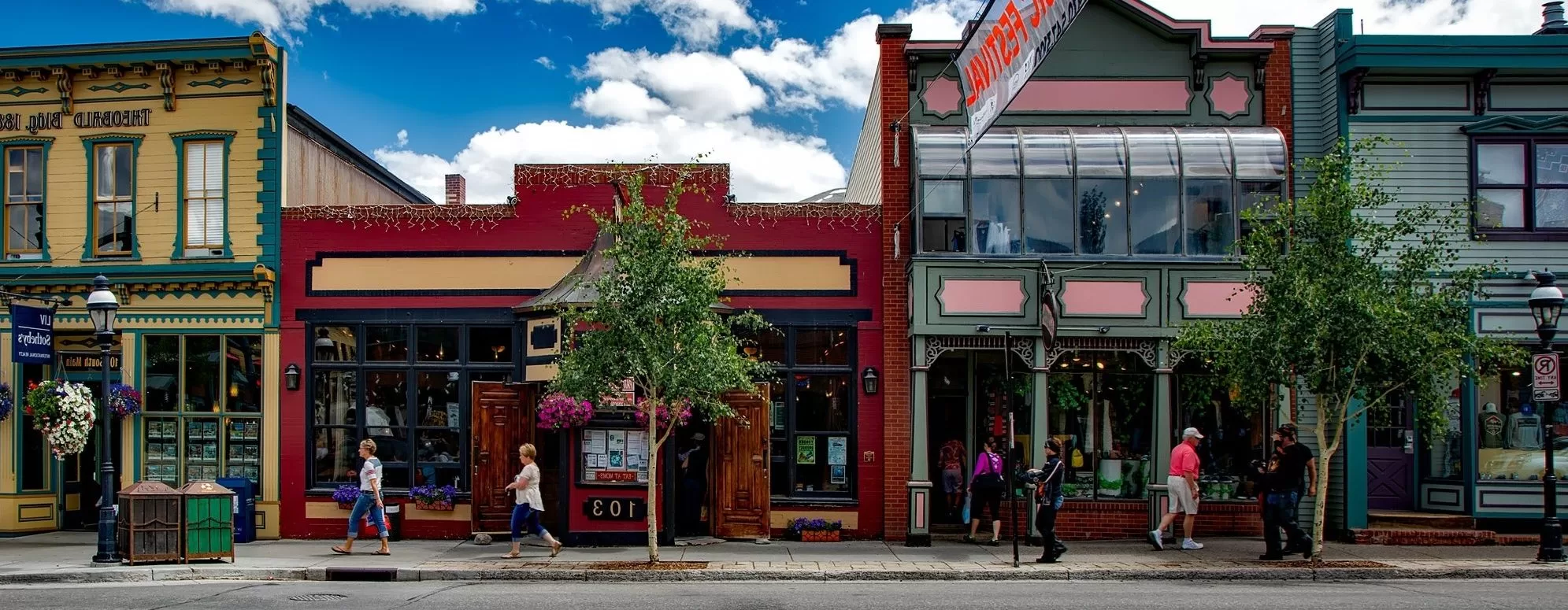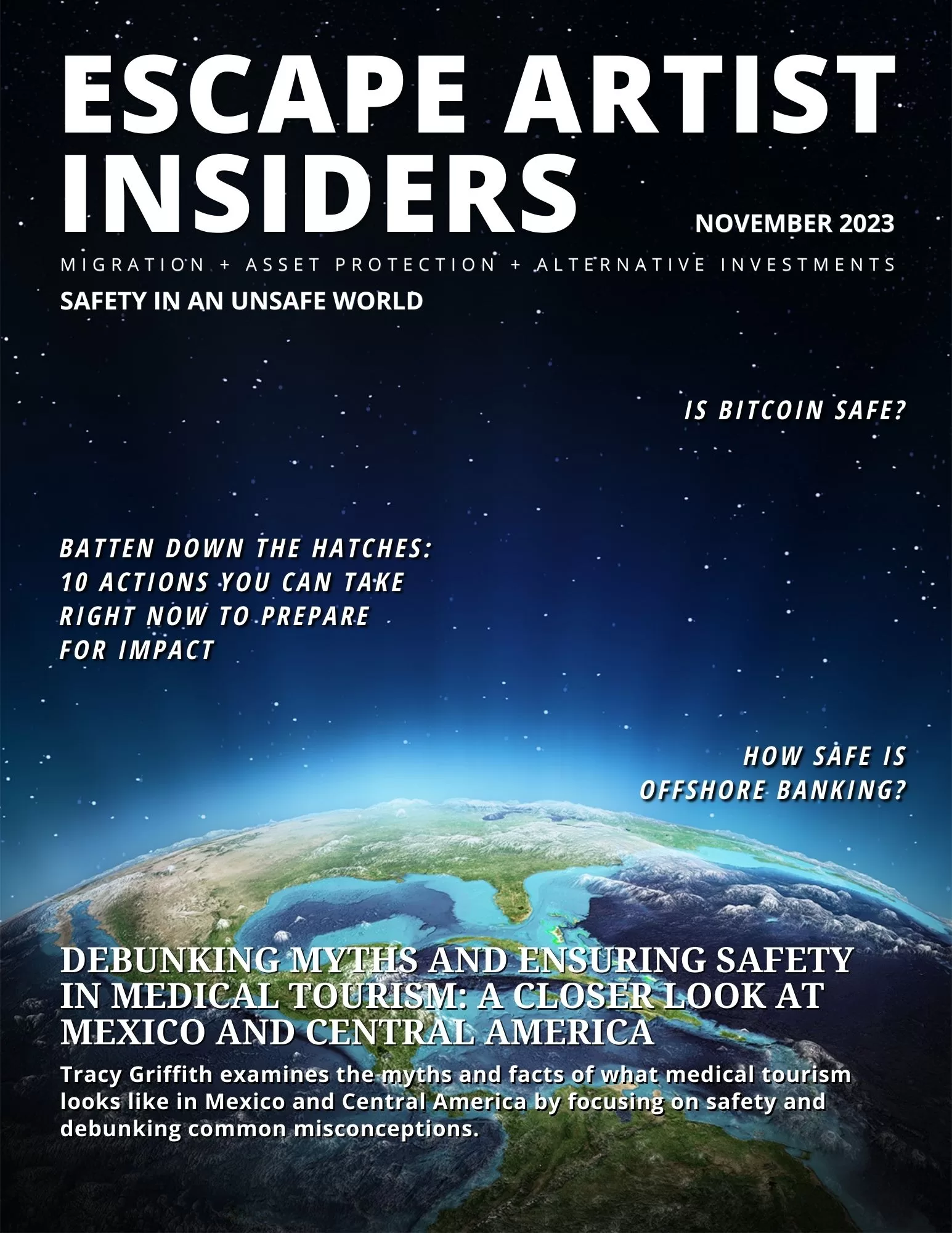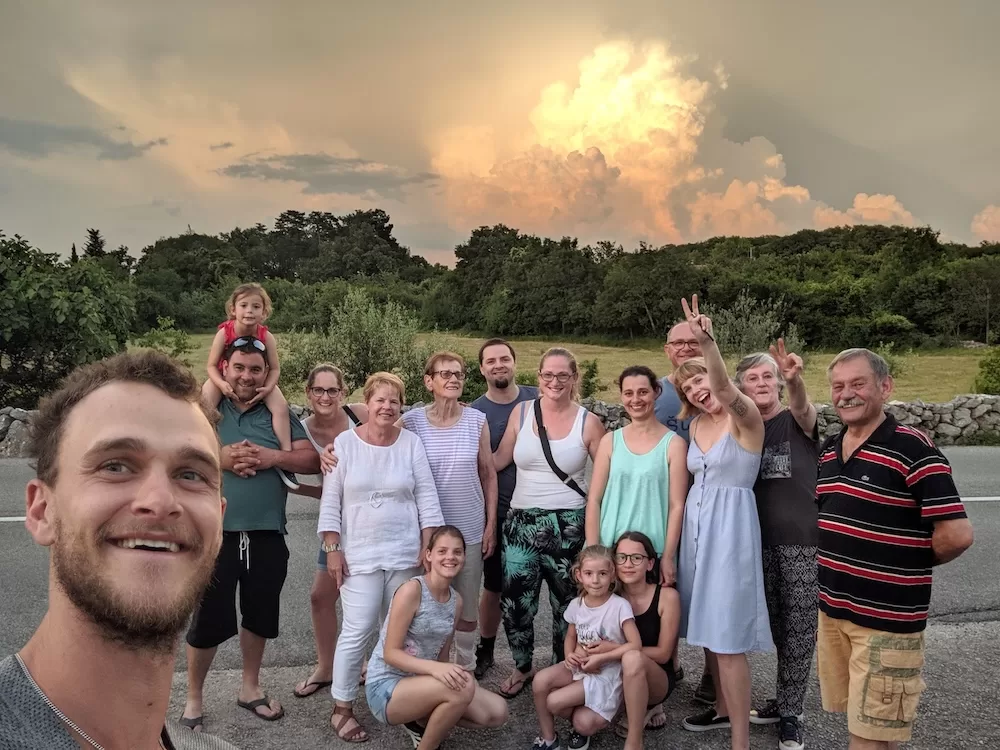As the festive season wraps the globe in a flurry of lights, joy, and celebration, it’s not just the tinsel that sparkles; it’s also the diversity of traditions that illuminate our world in unique ways. Christmas and New Year’s Eve are universally recognized holidays, yet they are celebrated with an array of customs as varied as the cultures that observe them. From the sun-drenched beaches of Australia to the snow-laden landscapes of Finland, each tradition offers a window into the heart of its people and their celebratory spirit.
In this article, I take you on a festive journey, exploring twenty countries and their unique, sometimes quirky, traditions that make Christmas and New Year’s celebrations special. So, buckle up your imaginary seatbelts and prepare for a whirlwind tour of global festivities. Whether it’s about finding a hidden pickle in a Christmas tree or roller-skating to church, these customs not only add to the holiday cheer but also remind us of the incredible diversity and beauty of human culture.
Join me as we unwrap the world’s festive secrets, one country at a time.
1. Australia
In Australia, where December falls in the middle of summer, Christmas celebrations take a sun-soaked twist. Australians often swap snowy landscapes for sandy beaches, hosting festive beach parties. These gatherings are filled with barbecues, beach cricket, and even Santa Claus ditching his traditional attire for something more suitable for surfing! This unique celebration reflects Australia’s warm climate and outdoor culture, offering a distinct contrast to the conventional ‘White Christmas’ imagery. It’s not just about the setting, though; it’s a reflection of the Australian spirit—relaxed, friendly, and always ready for a good time.
2. Japan
A surprising custom has emerged in Japan, a country where Christmas isn’t traditionally celebrated: feasting on Kentucky Fried Chicken! This tradition began in the 1970s, thanks to a successful KFC marketing campaign. It has since become so popular that families often place their orders weeks in advance to avoid long lines. The KFC Christmas meal often includes chicken, cake, and champagne, symbolizing a Western-style Christmas celebration. This unique tradition highlights how global brands can influence and create new cultural practices, merging them with local customs.
3. Norway
In Norway, a peculiar yet charming Christmas Eve tradition involves hiding brooms. It’s a custom rooted in ancient beliefs that on Christmas Eve, evil spirits and witches emerge. To prevent these malevolent beings from stealing their brooms for midnight rides, Norwegians hide them away. This tradition is a nod to Norway’s rich folklore and superstitions surrounding the Yuletide season. Today, while the fear of witches has faded, the custom persists, adding a playful and historical aspect to the festive preparations and reminding Norwegians of their cultural heritage.
4. Venezuela
A unique Christmas tradition unfolds on the vibrant streets of Venezuela, where people of all ages strap on roller-skates and glide through the streets. This custom is particularly popular in the capital, Caracas, where roads are often closed to traffic to ensure the safety of the skating congregation heading to the early morning Mass. This tradition, known as “Misa de Aguinaldo,” brings a festive and communal spirit to the religious observance, with families and friends joining together in a colorful, moving parade. It’s a vivid expression of the joy and togetherness that characterizes the Venezuelan Christmas.
5. Iceland
In the chilly landscapes of Iceland, Christmas is greeted with the folklore of the Yule Lads. These 13 mischievous figures, stemming from Icelandic legends, visit children across the country over the 13 nights leading up to Christmas. Each night, children place their shoes by the window, and depending on their behavior throughout the year, they either receive gifts or rotten potatoes. The Yule Lads, each with their own distinct personality and name, such as Spoon-Licker and Door-Slammer, add a playful and whimsical element to the holiday season, blending the modern with the mythological.
6. Germany
In Germany, a peculiar yet delightful tradition involves hiding a pickle-shaped ornament within the branches of the Christmas tree. On Christmas morning, the first child to find the pickle is said to receive good luck for the upcoming year, along with a special gift. The origin of this tradition is somewhat mysterious, with some claims suggesting it might have American roots. Regardless of its origin, the Christmas pickle, or “Weihnachtsgurke,” has become a cherished part of German Christmas celebrations. It adds an element of fun and anticipation to the holiday, making the festive tree-decorating ritual even more engaging for children and adults alike.
7. Ukraine
Ukrainian Christmas trees glisten not just with lights and ornaments, but also with artificial spider webs. This unique decoration stems from a folk tale where a spider wove a beautiful web on the tree of a poor family, which turned to silver and gold in the morning light, bringing them good fortune. Today, these webs symbolize prosperity and luck. The tradition, known as ‘pavuchky’ (little spiders), adds a layer of cultural richness to the Ukrainian festive season, blending the magic of folklore with the joy of Christmas.
8. Spain
As the clock strikes twelve on New Year’s Eve in Spain, a delicious and auspicious custom unfolds. Spaniards eat twelve grapes, one for each chime of the clock, symbolizing their hopes for the twelve months ahead. This tradition, known as “Las doce uvas de la suerte” (The twelve grapes of luck), is a vibrant and communal moment of the celebration. It combines the fun of a timed challenge with the deeper wish for a year filled with good fortune. Gathering around the television or in public squares, it’s a unifying moment for families and friends.
9. Scotland
Scotland’s New Year’s celebration, Hogmanay, is rich with customs, including the tradition of ‘First-Footing.’ This tradition holds that the first person to cross the threshold of a home after midnight brings good fortune for the coming year. Ideally, the first-footer should be a dark-haired male, bearing gifts such as whisky, coal, shortbread, or a ‘black bun’ – all symbols of good luck. This practice reflects the Scottish emphasis on hospitality and the community’s role in ushering in a prosperous new year. First-Footing is not just a ritual; it’s a gesture of goodwill, steeped in the warmth of Scottish culture.
10. Estonia
Christmas Eve in Estonia brings a warm, communal tradition – visiting the sauna. This practice is not just about relaxation but is deeply rooted in Estonian culture, symbolizing purification and bonding. Families gather in the heat of the sauna to wash away the toils of the past year, preparing both physically and spiritually for Christmas. The warmth of the sauna contrasts starkly with the cold Estonian winter, creating a cozy refuge and a space for quiet reflection. It’s a time for stories, laughter, and the strengthening of familial bonds, embodying the spirit of togetherness that defines Christmas.
11. Philippines
In the Philippines, circles take center stage in New Year’s celebrations. Representing prosperity and continuity, round shapes are incorporated into various aspects of the festivities. Filipinos often wear polka dots, display round fruits on their dining tables, and carry coins in their pockets. As midnight approaches, coins are jangled, and round fruits are eaten, all in the hope of attracting wealth and good fortune in the coming year. This tradition showcases the Filipinos’ joyful and optimistic spirit, blending superstition with the hope for a prosperous future.
12. Brazil
New Year’s Eve in Brazil is a vibrant display of hopes and wishes, expressed uniquely through the color of one’s underwear. Each color symbolizes a different hope for the coming year: yellow for prosperity, red for love, white for peace, and green for health. This tradition, blending superstition with fashion, adds a playful yet meaningful aspect to the celebration. Brazilians party on the beaches or at home, their choice of underwear color a personal secret wish for the future. It’s a tradition that combines individual desires with collective celebration, encapsulating the Brazilian spirit of hope and joy.
13. Austria
In the alpine regions of Austria, the festive season brings not just St. Nicholas but also his fearsome counterpart, Krampus. The Krampus Parade, or ‘Krampuslauf’, is a centuries-old tradition where people dress as Krampus, a horned, demonic figure. They roam the streets, rattling chains and bells, to scare those who have been naughty. This tradition, deeply rooted in Alpine folklore, serves as a reminder of the balance between good and evil. The Krampus parades, with their elaborate costumes and theatrical performances, are a thrilling and slightly terrifying spectacle, showcasing a darker, more ancient aspect of Christmas folklore.
14. Italy
Christmas Eve in Italy is marked by the sumptuous ‘Feast of the Seven Fishes’, or ‘La Vigilia’. This tradition involves a meal of seven different types of fish, symbolizing the number seven in the Bible. The dishes vary by region and family, but common choices include calamari, shrimp, and baccalà. This feast is more than just a culinary delight; it’s a gathering that embodies the Italian values of family, generosity, and the joy of sharing a meal. This tradition highlights the importance of food in Italian culture as a means to celebrate, connect, and savor life.
15. Sweden
In Sweden, Christmas Eve brings a peculiar television tradition: watching “Donald Duck and His Friends Wish You a Merry Christmas.” Since 1959, at 3 PM every Christmas Eve, families across Sweden gather around their televisions to watch this Disney special, known as ‘Kalle Anka och hans vänner önskar God Jul’. This tradition has become a beloved part of Swedish Christmas, uniting generations in a moment of nostalgia and joy. It’s a testament to the enduring appeal of classic entertainment and how it can become an integral part of holiday traditions, bridging the old with the new.
16. Finland
In Finland, the Christmas Eve sauna is a cherished tradition, steeped in reverence and reflection. The sauna is not just a place to relax; it’s seen as a sacred space where Finns connect with their roots. A significant aspect of this tradition is leaving an empty seat for departed family members, symbolizing their enduring presence in the family’s life. This practice melds the joy of Christmas with the remembrance of loved ones, offering a moment of peace and contemplation amidst the festive celebrations. It’s a poignant reminder of the Finnish values of family ties and respect for ancestors.
17. Denmark
In Denmark, New Year’s Eve has a rather noisy and unorthodox custom—breaking dishes on the doorsteps of friends and family. Danes save up chipped plates and old cups throughout the year for this very occasion. The more shattered porcelain one finds outside their door, the more luck and friendship they’re believed to receive in the coming year. This tradition is not just about breaking dishes; it’s a symbol of affection and camaraderie. It reflects the Danish spirit of community and the joy in bringing good fortune to those you care about.
18. Greece
In Greece, the New Year brings a symbolic act of renewal—burning old shoes. This tradition is rooted in the belief that the burning helps ward off misfortunes and bad spirits of the past year. By setting fire to old shoes, Greeks symbolically step into the New Year with a clean slate, leaving behind any negativity or ill luck. This ritual, often accompanied by fireworks and festive gatherings, showcases the Greek emphasis on renewal, optimism, and the hope that the New Year will bring better fortunes. It’s a vivid example of how traditions can blend superstition with the universal desire for a fresh start.
19. Colombia
In Colombia, New Year’s Eve is not just about fireworks and feasting; it also involves a unique custom of carrying empty suitcases around the block. This tradition is performed with the hope that the coming year will be filled with travel and adventure. Colombians, known for their joyous spirit and love for celebration, take part in this ritual with enthusiasm and laughter. It reflects a collective yearning for exploration and the excitement of discovering new places. This tradition is a charming example of how cultural practices can encapsulate the hopes and dreams of a community, turning a simple act into a symbolic gesture towards a future filled with journeys.
20. South Africa
In South Africa, the festive season offers a culinary twist with the consumption of deep-fried caterpillars of the Emperor Moth, known locally as ‘Mopane worms’. These caterpillars are a traditional delicacy, rich in protein, and are enjoyed by many during the Christmas season. The practice of eating Mopane worms reflects the country’s diverse culinary culture and the use of indigenous ingredients. They are often prepared with spices and served as a snack. This tradition showcases the adaptability and resourcefulness of South African cuisine, offering a unique taste experience that challenges conventional festive treats.
Embrace the World’s Festive Mosaic
As we conclude our festive journey around the globe, it becomes evident that the spirit of Christmas and New Year’s transcends borders and cultures, manifesting in a myriad of traditions, each unique and special in its own way. From the sunny Australia to the snowy Austria, the customs we’ve explored offer more than just a glimpse into how different cultures celebrate; they tell stories of heritage, community, and universal human aspirations.
Whether it’s through the shared laughter of breaking dishes in Denmark, the hopeful carrying of suitcases in Colombia, or the warmth of a Christmas Eve sauna in Finland, these traditions remind us of the shared humanity that binds us all. They celebrate not just the joy of the season but also the diversity that enriches our world.
In embracing these diverse customs, we find a deeper appreciation for the world’s cultures and a reminder that in the heart of all festive celebrations lies a common thread – the desire for joy, togetherness, and a hopeful look towards the future. As we celebrate our own traditions, let us also open our hearts to the beautiful and varied ways in which the world commemorates this magical time of year.










